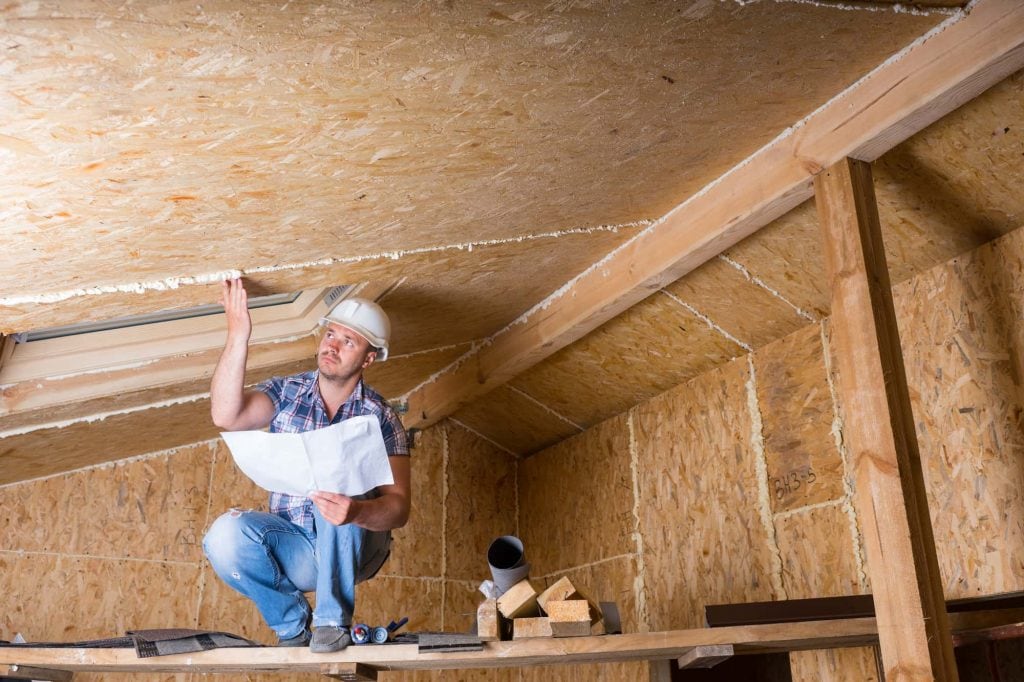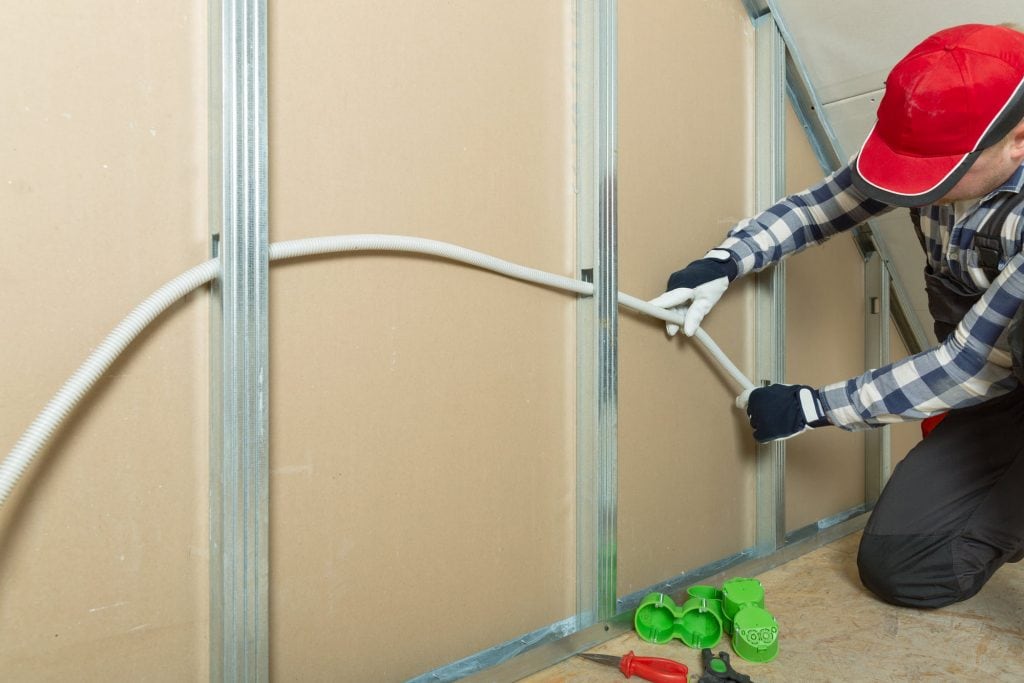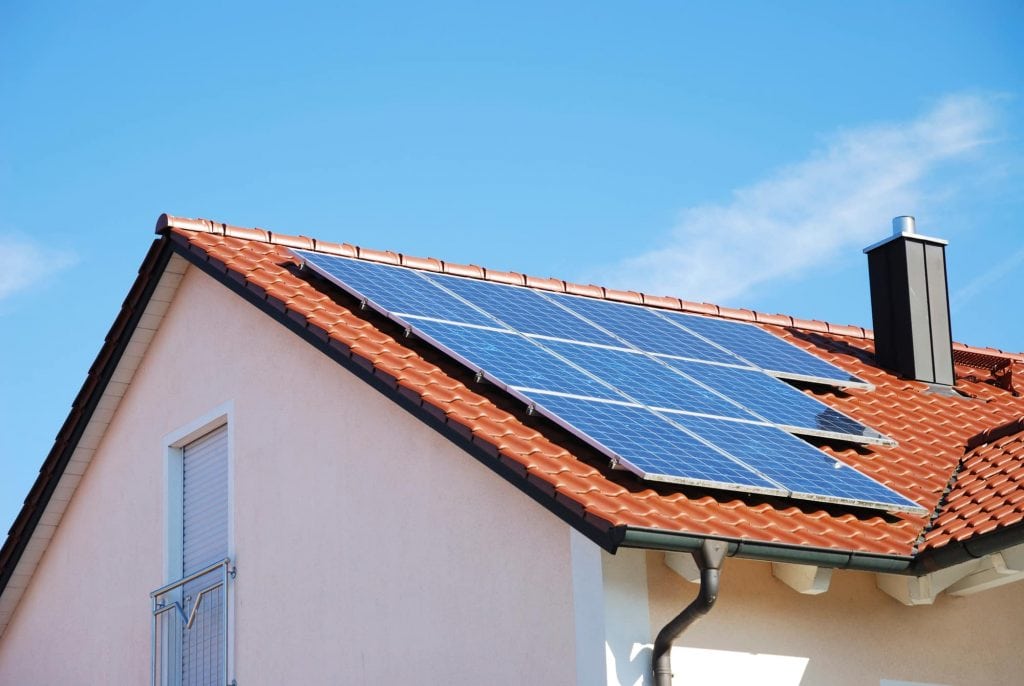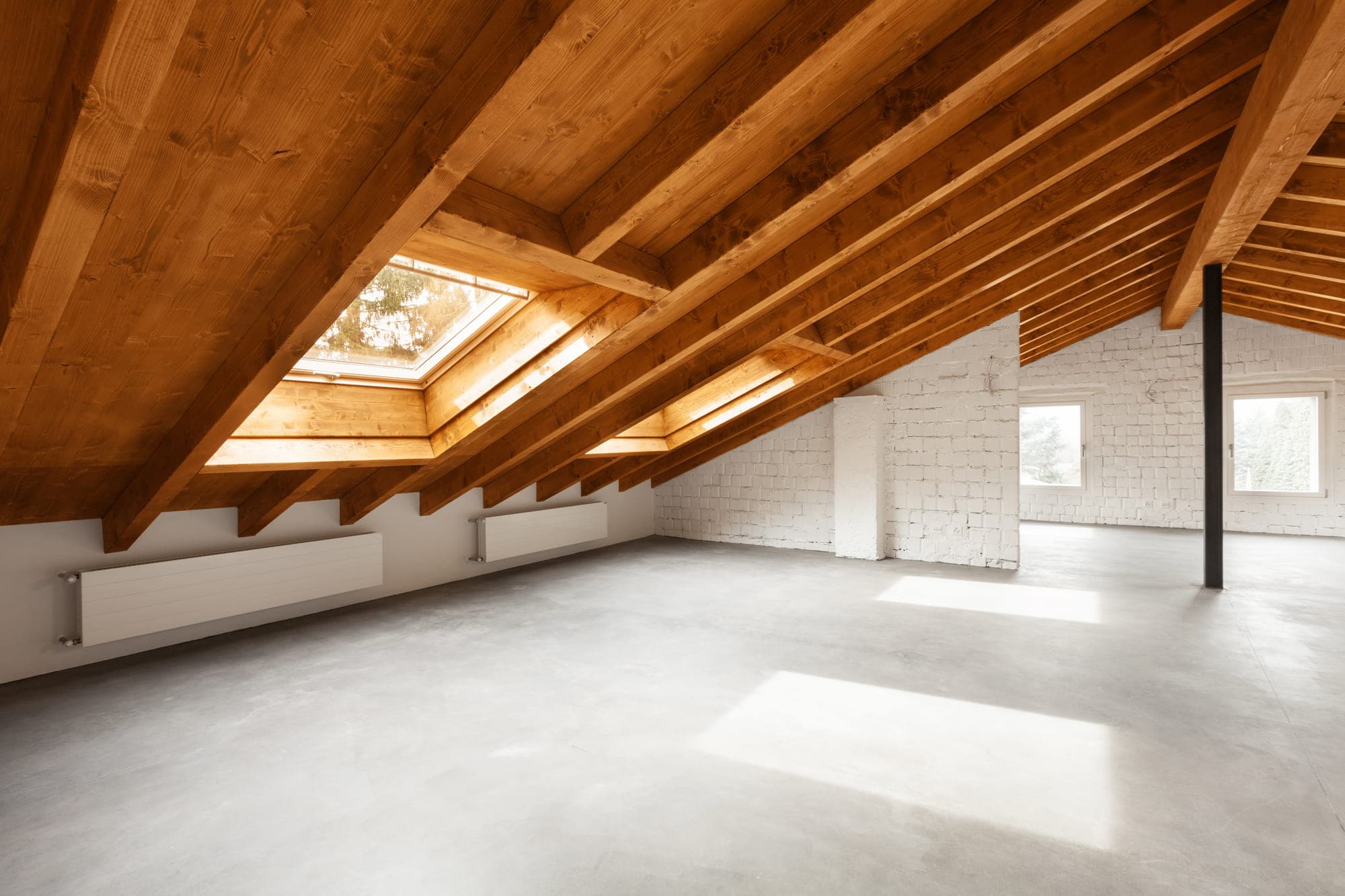The attic is a place in our homes often associated with extra storage space for forgotten holiday decorations and perhaps the occasional cobweb. If you’re a homeowner, you understand the value of every square footage in your house, including the attic.
At eXp Realty, we believe that making the most of your attic can drastically improve your home’s energy efficiency, comfort, and overall value.
Whether it’s a finished attic that doubles as an extra bedroom or an unfinished attic that serves as storage space, there’s more to attics than meets the eye.
The Importance of Owning and Maintaining an Attic
Owning and maintaining an attic is an integral part of homeownership. Properly cared for, your attic can serve as a livable space, add extra storage space, and play a key role in your home’s energy performance.
For instance, a properly insulated attic can help keep your house cool in the summer heat and warm in a cold climate, contributing to a comfortable indoor temperature and lower energy bills. This guide will help you navigate the many aspects of owning and maintaining an attic, from assessing its condition to cleaning and organizing it for optimal use.
Assessing Your Attic
The first step towards leveraging your attic’s potential is understanding its current state. Start by inspecting its structural integrity. Look at the ceiling joists and roof trusses for signs of stress or damage. A hot attic can indicate insufficient insulation, while roof leaks or moisture issues may point to problems with the building envelope.
Next, evaluate your attic’s insulation and ventilation systems. An unconditioned attic with inadequate insulation can cause energy loss, resulting in higher cooling costs and a larger carbon footprint.
Check the insulation levels and ensure proper ventilation for cooler air circulation. The type of attic you have, be it a scuttle attic, a larger attic, or a smaller crawl space type, will dictate the insulation you need. For example, spray foam insulation is great for sealing air leaks in a hot attic, while fiberglass insulation works well in larger attics.
Accessibility and safety measures are also paramount when assessing your attic. Ensure that your attic doors are sturdy and the stairs or ladder leading up are in good condition. Check the electrical wiring for any potential issues that could pose a fire risk.
Cleaning and Organizing Your Attic
Once you’ve assessed your attic and addressed any structural, insulation, or safety issues, it’s time to clean and organize this extra space. Start by decluttering and removing unnecessary items. This task might be daunting if your attic has become a repository for unused items over the years, but it’s a necessary step to creating a functional attic space.
After decluttering, sweep or vacuum the floors and corners to ensure a dust-free environment. This is especially important in unfinished attics where dust and allergens can easily accumulate.
Installing proper storage solutions will maximize your attic space. Consider using labeled plastic bins for storing items like holiday decorations or items not frequently used. Keep in mind that attics can experience extreme temperatures, so avoid storing items that can be damaged by heat or cold.
Maintaining your attic makes the most of every square footage and contributes to your home’s overall energy efficiency and comfort. So why not take the time to assess, clean, and organize your attic? You might be surprised by what you find and the potential it has!
Remember, if you’re looking for a home with a perfect, finished attic or need more advice on optimizing your current one, contact a local real estate agent today. They can help you find the ideal property or offer actionable solutions to make your attic more energy-efficient and functional.
Insulation and Ventilation
Proper insulation is key to maintaining a comfortable temperature within your home and reducing energy bills. If your attic is not insulated or under-insulated, heat escape can occur, causing your heating and cooling systems to work harder and increase energy costs. Insulating your attic can result in lower monthly energy bills, improved energy performance, and a reduced carbon footprint.

To begin, evaluate your attic’s current insulation level. This can be done by checking the thickness of your existing insulation and identifying its type. You can have spray foam, fiberglass, or foam insulation. It may be time for an upgrade if you notice insufficient insulation or any signs of degradation.
Choosing the right insulation material for your climate is crucial. High insulation is needed in colder climates to prevent paid-for heat from escaping through the roof. In contrast, in hot climates, radiant barriers and other forms of insulation reflect excess heat away from the home.
To improve energy efficiency, consider an attic insulation upgrade. This could involve adding extra inches of insulation, insulating your roof deck, or insulating your attic floor joists. If you have a flat roof, insulating it can help maintain a cooler attic.
Attic ventilation is equally as important as insulation. Without proper attic ventilation, moisture can build up, leading to dampness, mold growth, and potential structural damage. A well-ventilated attic can help maintain a cooler indoor temperature in summer and prevent ice dam solutions in winter by allowing cooler air to circulate.
Pest Control and Prevention
One more unwelcome aspect of attic ownership is dealing with pests. Rats, bats, squirrels, and insects often find attics a convenient place to nest, causing damage and potentially impacting your home’s comfort makeover.
To prevent pest infestations, start by sealing all possible entry points, such as air leaks, cracks, and gaps around attic doors or windows. Regularly clean your attic to deter pests, and consider using natural repellents.
Suppose you find signs of an existing pest infestation, such as droppings, chew marks, or unusual noises. While some smaller infestations may be managed with DIY-friendly projects, larger or more persistent infestations may require the help of professional pest control services.
Lighting and Electrical Considerations
Lighting is another important consideration when maintaining your attic. Natural light can make your attic feel more welcoming and reduce the need for artificial light. Consider adding windows or skylights for extra natural light if your attic’s architectural features allow.

Assess the current lighting situation in your attic. If it’s dimly lit, you may consider upgrading to energy-efficient lighting options, such as LED bulbs, to make the space more usable while reducing energy waste.
As with any space in your home, safety should be at the forefront of any electrical considerations. Check the attic’s electrical wiring, ensuring it’s up to date and compliant with building codes. Look for any frayed wires or loose connections that could pose a fire hazard and get them repaired.
Attic Safety Measures
When it comes to attic ownership, safety should always be noticed. Securing access to your attic is a key factor in creating a safe attic environment. Install sturdy handrails and guardrails to prevent accidents, particularly if you have a scuttle attic or other types of attics with difficult access points. Proper attic doors should be used for safer entry and exit, and the use of ladders should follow safety protocols to prevent falls.
Fire safety precautions are crucial, especially in homes with older electrical features. Ensure that the attic’s wiring is up to code to prevent fire hazards, and check regularly for potential issues like frayed wires or overloaded circuits. Implementing negative pressure solutions can help reduce the chances of a fire spreading if one were to occur.
Add smoke detectors and carbon monoxide alarms in your attic for extra peace of mind. These devices are essential for the early detection of fires and harmful gas leaks. Remember to test these alarms regularly to ensure they are functioning correctly.
Regular Maintenance and Inspection
Consistent maintenance is key to preventing attic-related issues and prolonging the lifespan of your attic. Schedule regular inspections for water leaks and damage. Roof leaks can cause significant damage to your attic ceiling and structural integrity if left unchecked. If you have a flat roof, be extra vigilant for signs of water pooling.
Clean and replace air filters to maintain proper ventilation and reduce cooling costs. This simple action can significantly improve your air conditioner’s indoor temperature and energy efficiency. Inspect and clean these regularly to prevent moisture issues if you have bathroom fans venting into your attic.
Trim nearby trees and branches to prevent damage to your attic. Overhanging branches can cause damage to the roof, lead to leaf accumulation in the gutters, and provide an easy access point for pests.
Furthermore, regularly check and maintain your attic insulation and ventilation systems. The insulation levels should be inspected periodically to ensure they are sufficient. Ensure that attic vents are not blocked and allow for efficient airflow.
If you need clarification about the condition of your attic or how to perform these tasks, consider hiring a professional building inspector. They can provide actionable solutions and help you maintain your attic’s health and energy performance.
In conclusion, owning and maintaining an attic is more than just managing extra storage space. It’s about improving energy efficiency, providing livable space, and enhancing your home’s comfort. Need more help or looking for a property with a well-structured and maintained attic?
Energy Efficiency and Sustainability
One of the key benefits of properly maintaining your attic is enhanced energy efficiency, which can lead to lower energy bills. Implementing energy-saving practices, such as using radiant barriers and vapor barriers to prevent heat escape, can ensure that your attic maintains a comfortable temperature without wasting energy.

Consider the possibility of renewable energy options for your attic, such as installing solar panels on your roof. Solar energy can provide power for lighting and even an air conditioning unit in your attic, significantly reducing your reliance on grid electricity and your carbon footprint.
Eco-friendly insulation materials, like spray foam insulation or fiberglass insulation, are another way to increase energy efficiency and sustainability in your attic. These forms of insulation have been found to reduce energy waste and are often recommended in the insulation industry opportunity study.
Lastly, maximize natural light in your attic to reduce reliance on artificial lighting. Installing larger windows or skylights can flood your attic with natural light, making it a more inviting and livable space.
Key Takeaways
Owning and maintaining an attic offers a variety of benefits, from providing extra storage space to improving your home’s energy performance. Proper insulation and ventilation are crucial, whether you’re dealing with a hot attic in the summer heat or trying to keep your house cool.
Regular maintenance, including pest control, safety checks, and cleaning, can help avoid potential issues and costly repairs. Lastly, making your attic energy-efficient and sustainable reduces energy costs and benefits the environment.
Your attic is more than just an extra space—it’s an opportunity for home improvement, comfort makeover, and even a potential spare bedroom or living space. For more guidance, feel free to contact an eXp real estate agent.
Agents can assist you in finding the best property to suit your needs, guide you on maintaining your attic, or help you sign up to get alerts of new property listings when they come on the market. And be sure to sign up for alerts to find properties with great attic spaces when they become available.
FAQs: Attic
You might still have some questions about attics. Here are the answers to some of the most common ones:
What is an attic in a house?
An attic is a space found directly under the roof of a house. It can come in different forms, from unfinished attics to fully converted livable spaces.
Why is it called an attic?
The term ‘attic’ is derived from Attica, a region in Greece known for its distinctive architectural features, particularly its high, triangular roof structures. The term was later adopted to refer to the topmost part of buildings.
Can I walk in my attic?
Yes, but be cautious. Walking in an attic should be done carefully, as the floor might be made up of ceiling joists covered with insulation, not designed to carry a person’s weight. Always walk on the visible joists to prevent falling through the ceiling below.
Should I go into my attic?
It’s essential to check your attic periodically to inspect for damage, clean, or organize. However, always ensure safe access and take necessary precautions when in the attic.
Can you live in an attic?
Attics can be converted into livable spaces like bedrooms or offices, provided they meet specific building codes, including minimum ceiling height, ventilation, and emergency escape routes.
Does every house have an attic?
Not necessarily. While many homes, particularly older ones, have attics, some modern designs of houses with certain types of roofs, like flat roofs or very sloped roofs, may need an attic.
Can you have a bedroom in the attic?
Yes, as long as the attic conversion meets the necessary building codes and regulations, an attic can be transformed into a comfortable and functional bedroom.
What is the space directly under a roof of a house called?
The space directly under the roof of a house is typically called the attic.
Can animals get in my attic?
Yes, common pests like rodents, birds, bats, and insects can find their way into attics, especially if structural gaps or openings exist. Regular inspection and preventive measures can help keep pests out.





